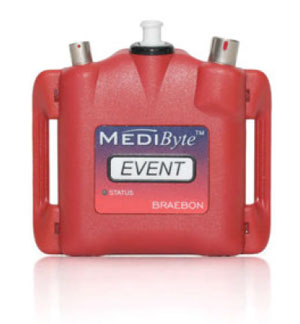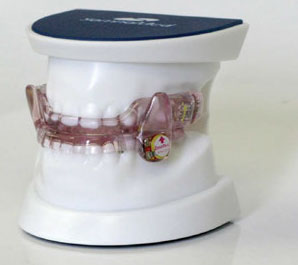Richard Bonato, PhD, RPSGT
 BRAEBON has been a leader in sleep therapy for 20 years with Co-Founder Dr. Richard Bonato as the public face of the company. Many dentists may not be aware of the giant contributions BRAEBON has made to their ability to successfully manage sleepy patients. DSP sat down with Dr. Bonato recently for this enlightening interview.
BRAEBON has been a leader in sleep therapy for 20 years with Co-Founder Dr. Richard Bonato as the public face of the company. Many dentists may not be aware of the giant contributions BRAEBON has made to their ability to successfully manage sleepy patients. DSP sat down with Dr. Bonato recently for this enlightening interview.
DSP: Please tell us how you got started in sleep, and when was it you realized the importance of dental involvement?
RB: I began studying sleep during my undergrad days in 1986 after I picked up an issue of National Geographic which had a cover article entitled “Why We Sleep?” Back then sleep disorders medicine was in its infancy and only a fraction of the clinical sleep laboratories found today existed worldwide. I found the article fascinating, figured there had to be a career in it somewhere because everyone sleeps and I decided to pursue this as an area of specialty. During my Master’s and Ph.D. studies I became the 604th person in the world to become registered as a polysomnographic technologist (RPSGT) while I worked in a hospital sleep laboratory. Afterward I completed my Ph.D. and decided to enter the industry where I worked for a large multinational corporation for two years. In 1998, myself and Don Bradley founded BRAEBON Medical Corporation in his basement with the vision of getting into home sleep diagnostics which we did in 2003 when we launched our MediPalm full PSG system capable of either home or laboratory use. In 2004, I had the vision of getting into dental sleep medicine because I saw oral appliance therapy as a future growth market. BRAEBON began working on a simpler home recording device called MediByte – Medi for medical and Byte as a play on bite registration – which was the first tool intended for use in both medical and dental settings. BRAEBON attended its first AADSM conference in 2005 and has been steadily growing in dental sleep medicine ever since.
DSP: We know that HST is becoming the most common method of identifying sleep disorders – can you tell us more about BRAEBON’s involvement with providing several solutions for testing? Do you see testing in dental offices as a growing part of the specialty?
RB: The founders of BRAEBON collaborated on the original Sandman PSG system in 1991-92. We used this vast experience in PSG product development in the development of our home sleep apnea recorders. As we evolved we developed powerful yet easy to use devices which used the same technology as used by leading sleep laboratories. Our goal today remains the same: to offer physicians and dentists the ability to test patients in the comfort of the home with the same powerful technology as used in the laboratory. Same biosensors, same waveforms, just a different sleeping environment. The testing in dental offices will certainly grow in the future, however, the optimal model will be structured in a cooperative fashion between physicians and dentists. One of the primary drivers for this increased testing is the need to address the sleep apnea epidemic. There will never be enough sleep laboratories to address the vast numbers of people who require sleep apnea testing. This fact, coupled with the average national CPAP compliance rate of around 50%, means that dentists and oral appliance therapy have a substantial role to play in identifying and screening patients at risk and offering alternative therapy to CPAP intolerant patients.
DSP: Compliance monitoring has been a longstanding goal in the field, and the DentiTrac has some significant history – for the practicing dentist today, how does the DentiTrac help provide ways to improve care?

RB: The DentiTrac micro-recorder represents BRAEBON’s first next-generation wearable technology and DentiTrac is the first in the world to receive FDA clearance for use in certain oral appliances. It measures about 8 x 10 x 5 mm and is embedded inside of a sleep apnea oral appliance which is worn during sleep. DentiTrac addresses one of the two Achilles’ heels of oral appliance therapy: the need for objective measurement of treatment compliance. CPAP machines have had objective compliance measurement for years and this information is now required by insurance companies for CPAP reimbursement. For the practicing dentist, DentiTrac levels the playing field with CPAP and provides the objective therapy adherence information expected by both physicians and insurance companies. Dentists are now able to identify precisely when an appliance is placed into the mouth, when it is removed, hours of daily use, and determine percentages of supine and nonsupine head position. The data is uploaded from anywhere in the world to the secure BRAEBON BridgeBuilder Cloud Portal where the information may be shared between clinicians. The DentiTrac merges oral appliance therapy with modern wearable electronics and represents a significant leap in the expansion of dental sleep medicine.
DSP: Once therapy has been started, dentists have choices to make about testing for effectiveness before the patient sees the sleep physician again, or managing to symptom relief then sending the patient back for testing. I’m curious what you, as a third party not directly involved in treating patients, thinks about these choices and strategies for patient care.

RB: I believe it is important for dentists to understand how to use home sleep testing devices properly and obviously I have always advocated using the same technology as used in sleep laboratories. After the patient receives a diagnosis from a sleep physician and there is an indication for oral appliance therapy, the dentist should perform a new baseline test on the patient prior to oral appliance delivery and use. This should be done regardless of whether the patient had a pervious PSG or home sleep apnea test (HSAT) because the apples-to-apples comparison is important. After adaptation and habituation and the oral appliance has been used for a matter of 3-4 weeks it is appropriate for a second test to be performed to determine oral appliance effectiveness. The baseline is now compared to the treatment result. This comparison dictates whether adjustment and further testing is needed. After both the patient and dentist are satisfied with results it is usually recommended that the patient is sent back to the referring physician to close the loop. Note that variations on this clinical workflow exist and it is important that a physician is involved at the beginning and end of the process and the dentist is managing titration with objective data. The relationship between physician and dentist are key and the office staff play a crucial role in its success.
DSP: You have a killer app testing user’s knowledge about Dental Sleep Medicine that should be part of every dentist’s learning path. How did that come about?
RB: I used to teach a third-year undergraduate program at Carleton University in Ottawa. One day it occurred to me that there are very limited educational resources available to dentists to help learn about dental sleep medicine. I revisited some of the university exam questions and adapted many of them for the Dental Sleep Medicine Study Guide in the hope of assisting dental health practitioners learn about the field. The free app is available for both Apple and Android platforms.
DSP: One of the biggest leaps for dentists treating sleep disorders is the need to work closely with physicians on every patient. BRAEBON spans the entire treatment spectrum – what do you wish every dentist would know about making this connection?
RB: When first approaching sleep physicians tell them you want to make them look better by helping their CPAP intolerant patients. Too many dentists push OAT as better than CPAP, but in reality it may or may not be better for a particular patient. After this goal is reached broaden the relationship whereby the dentist becomes both a referral source and treatment destination. Dentists have a huge advantage over physicians in a number of patient related areas. First, patient recall. Patients have become ingrained to see their dentist twice a year and dental offices habitually contact patients to recall them for a checkup. This is not typically done in physician offices; the average middle-aged male will go see their physician perhaps once every two years. Second, virtually every dentist has a front office staff member who knows every patient by name, the number of people in their family, age of the children, etc. This relationship can be leveraged to open conversations about snoring and sleep apnea. Third, hygienists are excellent touchpoints to explore sleep disordered breathing and a valuable first line of screening. BRAEBON has actually developed a free snoring and apnea poster for the hygienist’s operatory as a tool to start a conversation about sleep and breathing. For these reasons, dentists have a valuable and important role to play in the identification and treatment of sleep disordered breathing patients and can refer vast numbers of patients to sleep physicians. Every dentist needs to understand this. The key to the successful dentist – physician relationship is that the dentist wants to make the physician look better. By taking CPAP intolerant patients and turning them into successful OAT patients both the dentist and physician will look better in the eyes of the patient.
DSP: Education for dentists is a big part of what Dental Sleep Practice is about – in your lectures and interactions with dentists interested in this field, what do you find is the biggest gap in education? What would you like to see in dental sleep training?

DentiTrac micro-recorder
RB: Ultimately, courses in nocturnal airway management should become part of the standard dental school curriculum. Many dentists attending weekend CE courses have little to no hands-on experience in OAT or sleep technology and are starting from the ground floor. Comprehensive courses are available but it requires a dedicated effort on the part of the clinician to embark on this journey towards a recognized dental sleep credential. In addition, office auxiliary staff play a very important role in the overall success of the office dental sleep program and auxiliaries should be encouraged to seek additional sleep training. A recognized dental auxiliary sleep credential would also be a valuable asset to help grow the field of dental sleep medicine.
Stay Relevant With Dental Sleep Practice
Join our email list for CE courses and webinars, articles and more..